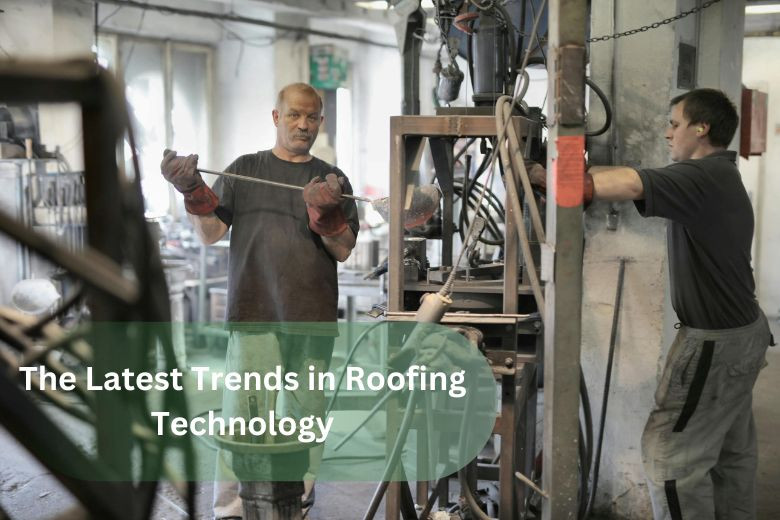The Latest Trends in Roofing Technology
Posted on August 06, 2024 by Admin

The roofing industry, just like many others, is rapidly evolving through the new technologies of durable, efficient, and aesthetically appealing products. Keeping abreast of the emerging trends in roofing technology should, therefore, help equip homeowners and property managers with making informed decisions concerning their roofing systems. Here's a heads up on some of these exciting progressive visions that appear to shape the future of roofing.
Innovative Roofing Materials
-
Cool Roof Technology
Cool roofs are among the most significant developments in roofing technology. They are specially designed to reflect much sunlight and absorb less heat, thus reducing roof-surface and building temperatures. This means that a homeowner's air conditioner works less to cool the house, which means lower cooling costs, and the life expectancy of the roofing under normal conditions will be increased. Cool roofs are particularly effective in hot climates and save a lot of energy.
-
Green Roofs
Only somewhat newly in the play now, green or living roofs start to get globally popular as one of the eco-friendly solutions for roofing your building. The technology involves growing vegetation on top of rooftops, providing natural insulation from the sun's rays, enhanced quality of air, and retaining mine water under the roof. Green roofs also increase the landscape beauty of buildings and create a conservation front in urban areas. This is a trend towards the important aspects of sustainability and environmental stewardship being integrated into roofing technologies.
-
Solar Roofing
Solar roofing integrates photovoltaic cells into the roofing material to allow homeowners to generate their own electricity. Unlike traditional, more common solar panels installed on top of existing roofs, solar roofing systems are designed to be used as actual roofing materials. This integration allows for a clean, smooth look while offering renewable energy that can lower utility bills and reduce the reliance on fossil fuels.
Must Read : How to Protect Your Roof from Pest Damage
Advanced Installation Techniques
-
Drone Technology
Drones are revolutionizing how roofing inspection and installation are done. This unmanned aerial vehicle can literally take pictures and videos of roofs with the highest resolution, giving infinite information on reviews and detection of probable issues without ladders or scaffolding. They also enhance safety since the risks of falls and accidents during inspections are reduced.
-
3D Printing
The 3D printing helps in manufacturing the customized roofing materials or components in the roofing. It makes the application of complex shapes and patterns possible and enables them to be done with precision, which makes the technology capable of enhancing roofing systems when it comes to the design and performance of the system. 3D printing can also reduce material wastage and make construction easier.
Smart roofing technology: Smart roofing technology uses sensors and IoT devices for tracking and managing roof conditions in real time. Such smart systems can track roof leaks, temperature variation, and structure-sound conditions, instantly alerting for maintenance. This trend reflects interest in up-surging the intervention of technology in building management in the agenda of better performance and efficiency.
Faqs
-
1. What are some of the benefits cool roofing technology has for a house owner?
Cool roof technology prevents the absorption of heat and a subsequent increase in indoor temperatures. This lowers cooling and increases comfort in the building. Besides this, it also saves on the cost of replacing roofing materials and enhances energy efficiency, hence economical in the resource investment, especially in a hot climate.
-
2. What are the environmental benefits of green roofs?
Green roofs offer a broad range of environmental benefits, including improved air quality, reduction of the urban heat island effect, and decreased runoff of stormwater. Green roofs offer natural insulation against heating or cooling of the building elements, resulting in reduced costs for heating and cooling. Generally, green roofs involve vegetating the roofing system and, hence, aid in achieving sustainability, offering more green space in urban environments.
-
3. How does solar roofing compare to traditional solar panels?
Solar roofing integrates the use of photovoltaic cells directly into the roofing material, hence it presents a more seamless and aesthetic option compared to traditional solar panels. Both relate to the creation of renewable electricity and a slashing of utility bills, but solar roofing actually omits separately installed panels, giving it a former, cleaner look and potentially higher property value.
Recent Post
- Top Plumbing Service Providers in Arizona, USA
- Top 10 Electrician Service Providers in Alabama, USA
- Top 20 Roof Repair Service Providers in Alabama, USA
- The Role of Roof Insulation in Energy Efficiency: Tips and Tricks
- Understanding Roof Damage from Wildlife and How to Prevent It
- How to Choose the Best Roofing Contractor for Emergency Repairs
- Roofing Maintenance for Historic Homes: Preserving Architectural Integrity
- The Importance of Proper Attic Ventilation for Roof Health
- How to Identify and Prevent Roof Mold and Mildew
- The Best Practices for Removing Snow from Your Roof